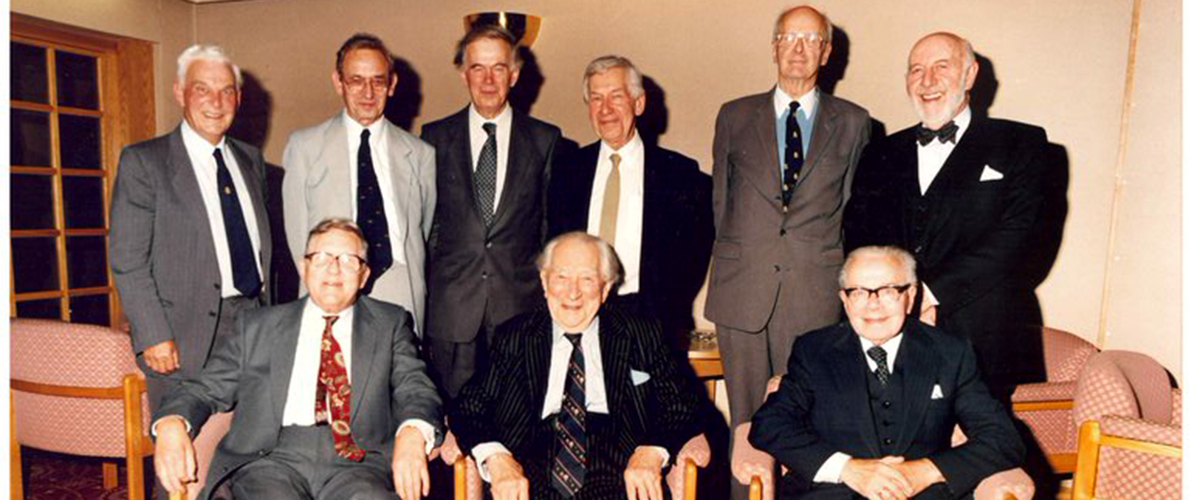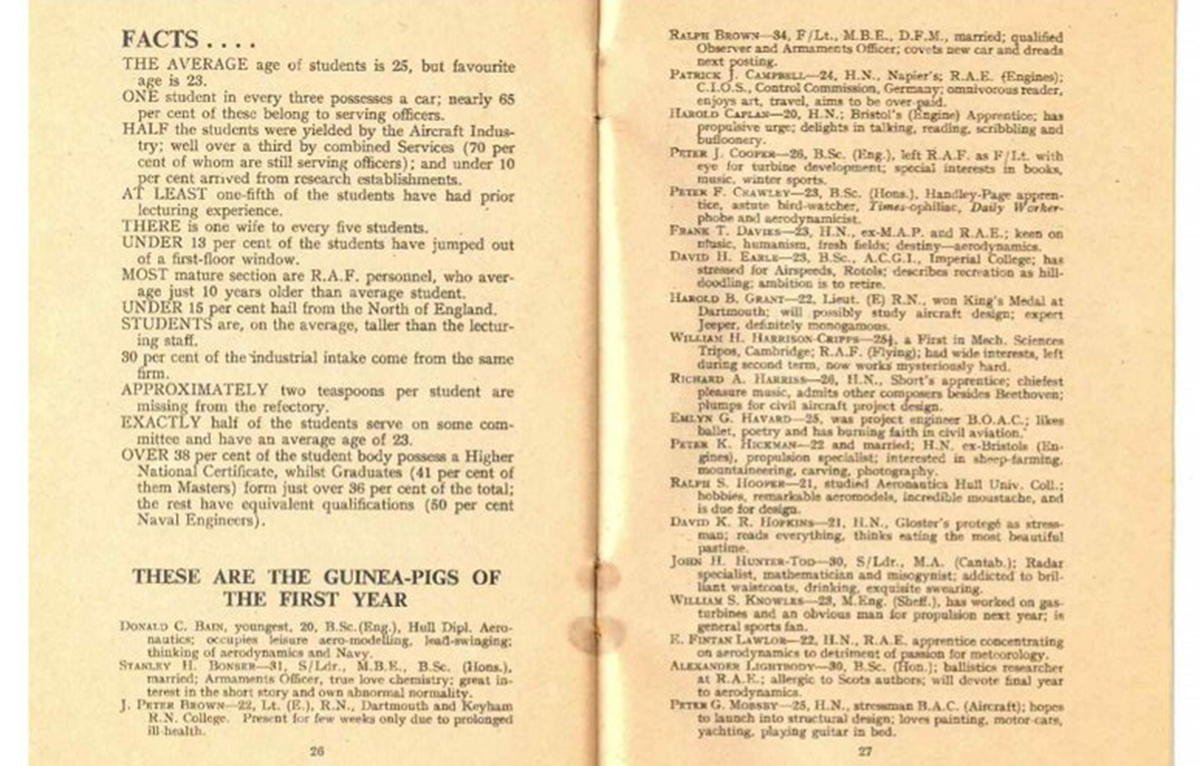
We were deeply saddened to learn of the passing of aeronautical pioneer and distinguished Cranfield alumnus Ralph Spenser Hooper on 12 December 2022, aged 96. Ralph was part of the very first student cohort at the College of Aeronautics, Cranfield in 1946. He went on to become one of the UK’s most important post-war aircraft designers, as the first Chief Designer of the revolutionary Harrier ‘jump jet’. He later led the team that designed the Hawk jet trainer, still flown by the RAF Red Arrows team.
Ralph was born in Essex on 30 January 1926 and spent his early years there before his family moved to Hull when he was seven. In an interview with the British Library, he recalled his early interest in flying, saying, “I think the earliest memory I have there is simply that there were birds around all the time in the woods and after a while you look at the birds and think, well why can’t I do that and that’s a pretty neat way of getting around.”
This early fascination with flight was further bolstered by his proximity to the three large aerodromes around Hornchurch, which he visited with his father and grandfather. When the family relocated to Hull in 1933, he attended Hymers College, where he remembered becoming interested in model aeroplanes and saving his pocket money to buy balsa wood in order to create his own. During the war, he was evacuated to Pocklington, before pursuing his interest in aeronautics by becoming an apprentice at Blackburn Aircraft Company in January 1942. He gained a Diploma in Aeronautics from University College Hull before joining the College of Aeronautics at Cranfield in 1946.
Of his time at Cranfield he said, “I think the term used in the brochure was that they were aiming to train ‘the leaders of industry’. It certainly takes a very large number of people to design an aircraft and it is thanks to my time at Cranfield that I was able to go on to do what I did at Hawker.” He also recalled enjoyed flying the College’s Avro Anson and Tiger Moth aircraft, as well as gliders.
He graduated with a Diploma of the College of Aeronautics in Aircraft Design in 1948 and attempted to gain employment at a light aircraft company, having decided that in doing so he would have a much greater chance of flying the company’s products. However, the situation after the war meant employment in military companies was much more likely, and so he joined Hawker Aircraft in 1948, working in the experimental drawing office.
It was at Hawker that he led the design team for the revolutionary Hawker P.1127 aircraft, which pioneered the development of the Hawker Harrier, the first successful operational fixed wing Vertical and/or Short Take-Off and Landing (V/STOL) aircraft.
He received an OBE in 1978 and the Royal Aeronautical Society’s Gold Medal in1986, He subsequently became Deputy Technical Director of British Aerospace Ltd at Kingston upon Thames, before retiring. He became a Fellow of the Royal Academy of Engineering in 1999, the highest honour for an engineer in the UK.
President of the College of Aeronautics Alumni Association (CCAAA), Professor John Fielding, remembers a more recent event. Ralph held a masterclass in aircraft design at the Royal Aeronautical Society headquarters for Cranfield University Aerospace Vehicle Design students, where he gave fascinating accounts of his career and design philosophy and shared valuable archive material.
Pro-Vice-Chancellor of the School of Aerospace, Transport and Manufacturing, Dame Professor Helen Atkinson said, “It was an honour and a privilege to meet Ralph in 2019 and present him with the Distinguished Aerospace Alumnus award. His hugely influential contribution to the aviation industry was truly inspirational and it was a pleasure to witness our students’ reactions to him during his masterclass.”
Vice-Chancellor Professor Karen Holford said, “Ralph Hooper was a modest and understated individual who often spoke generously of the contribution of others, rather than highlighting his own considerable vision and engineering genius. He was the embodiment of the spirit of innovation that has defined Cranfield ever since the foundation of the College of Aeronautics in 1946 and we will continue to instil his values of hard work, curiosity and problem-solving into all the students that follow in his footsteps here.”
